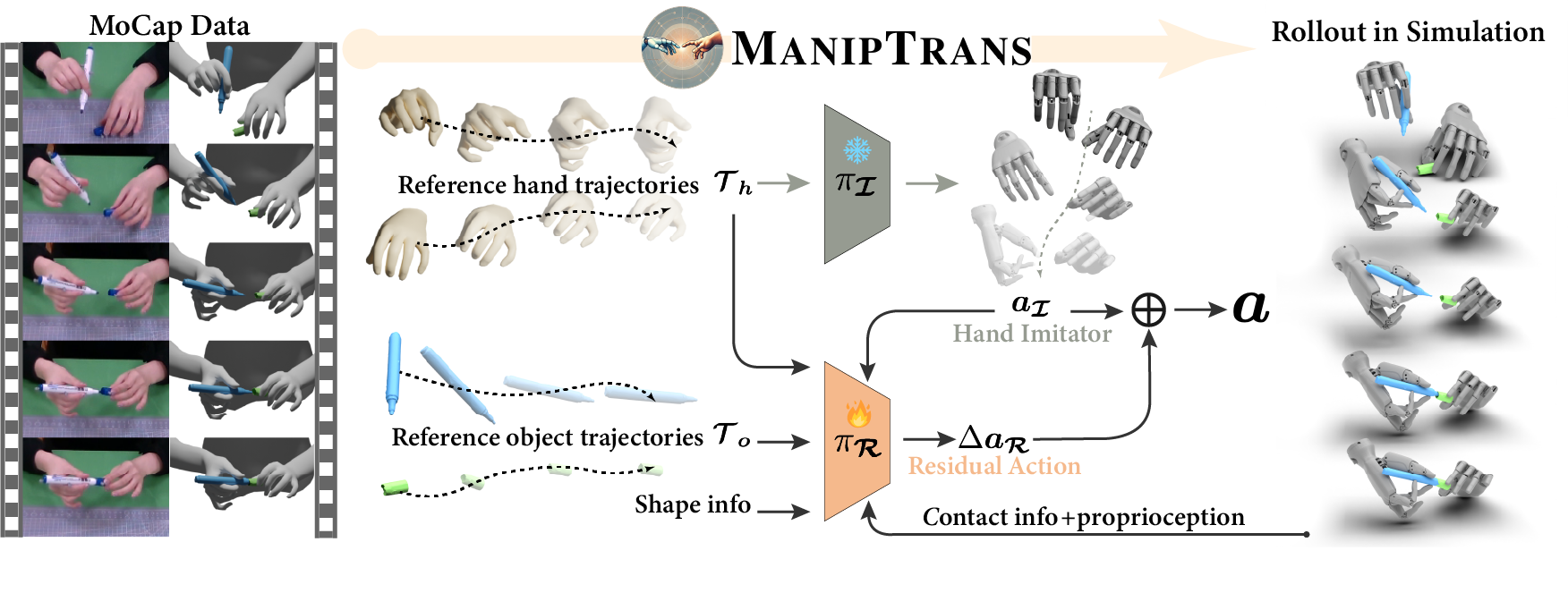Abstract
Human hands play a central role in interacting, motivating increasing research in dexterous robotic manipulation. Data-driven embodied AI algorithms demand precise, large-scale, human-like manipulation sequences, which are challenging to obtain with conventional reinforcement learning or real-world teleoperation. To address this, we introduce ManipTrans, a novel two-stage method for efficiently transferring human bimanual skills to dexterous robotic hands in simulation. ManipTrans first pre-trains a generalist trajectory imitator to mimic hand motion, then fine-tunes a specific residual module under interaction constraints, enabling efficient learning and accurate execution of complex bimanual tasks. Experiments show that ManipTrans surpasses state-of-the-art methods in success rate, fidelity, and efficiency. Leveraging ManipTrans, we transfer multiple hand-object datasets to robotic hands, creating DexManipNet, a large-scale dataset featuring previously unexplored tasks like pen capping and bottle unscrewing. DexManipNet comprises 3.3K episodes of robotic manipulation and is easily extensible, facilitating further policy training for dexterous hands and enabling real-world deployments.
Method

Simulation Results
Real-world Results
Citation
@inproceedings{li2025maniptrans,
title={Maniptrans: Efficient dexterous bimanual manipulation transfer via residual learning},
author={Li, Kailin and Li, Puhao and Liu, Tengyu and Li, Yuyang and Huang, Siyuan},
booktitle={Proceedings of the Computer Vision and Pattern Recognition Conference},
year={2025}
}
powered by Academic Project Page Template